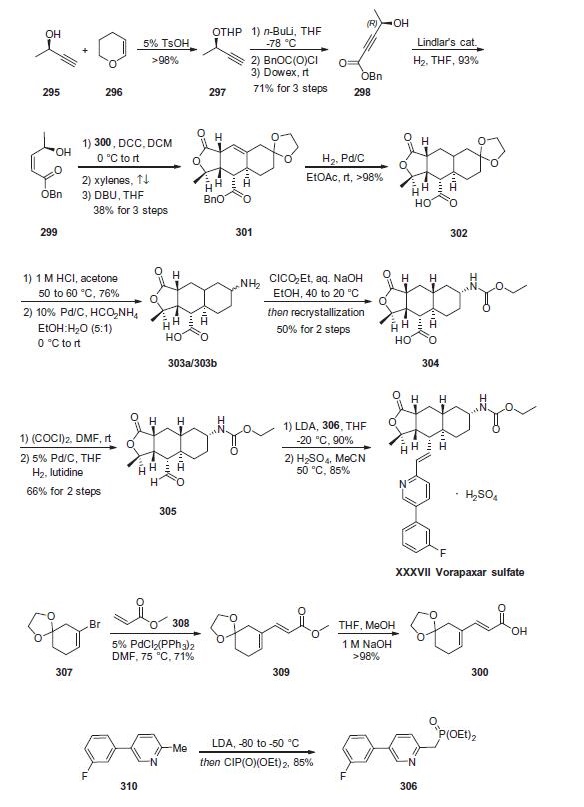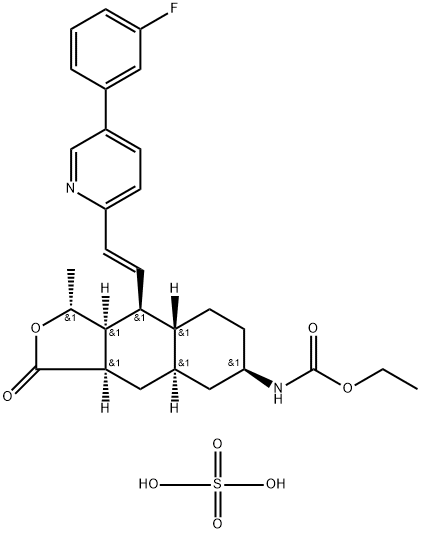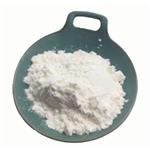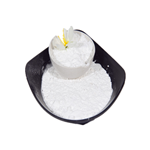Although a variety of papers and patents describe the synthesis
of vorapaxar sulfate (XXXVII), a combination of two patents
describe the largest-scale synthesis reported in the literature. Retrosynthetically, the drug can be
divided into olefination partners 306 and 305. Lactone 305
is further derived from synthons 300 and 299, which are readily
prepared from commercially available starting materials. Dienyl
acid 300 was constructed in two steps starting from commercial
vinyl bromide 307, which first undergoes a Heck reaction with
methacrylate (308) followed by saponification of the ester to afford
the desired acid 300 in 71% over two steps.
The synthesis of alcohol 299 begins with tetrahydropyranyl
(THP) protection of enantioenriched alcohol 295 to afford butyne
297 . Lithiation of this system followed by trapping
with (benzyloxy)chloroformate and Dowex work-up to remove
the protective functionality provided acetyl ester 298. Hydrogenation
of the alkyne with Lindlar?ˉs catalyst delivered cis-allylic alcohol
299 in 93% yield. Acid 300 was then esterified with alcohol
299 by way of a 1,3-dicyclohexylcarbodiimide (DCC) coupling
and, upon heating in refluxing xylenes, an intramolecular Diels¨C
Alder reaction occurred. Subsequent subjection to DBU secured
the tricyclic system 301 in 38% over three steps as a single enantiomer.
Diastereoselective hydrogenation reduced the olefin with
concomitant benzyl removal to give key fragment 302. Next, acidic
revelation of the ketone followed by reductive amination with
ammonium formate delivered primary amines 303a/303b as a
mixture of diastereomers. These amines were then converted to
the corresponding carbamates, and resolution by means of recrystallization
yielded 50% of 304 as the desired diastereomer. Acid 304
was treated with oxalyl chloride and the resulting acid chloride
was reduced to aldehyde 305 in 66% overall yield. Finally, deprotonation
of phosphonate ester 306 followed by careful addition of 305 and acidic quench
delivered vorapaxar sulfate (XXXVII) in excellent yield over the
two-step protocol.
The preparation of vorapaxar phosponate ester 306
commenced from commercial sources of 5-(3-fluorophenyl)-2-
methylpyridine (310). Removal of the methyl proton with LDA
followed by quench with diethyl chlorophosphonate resulted in
phosponate ester 306.





